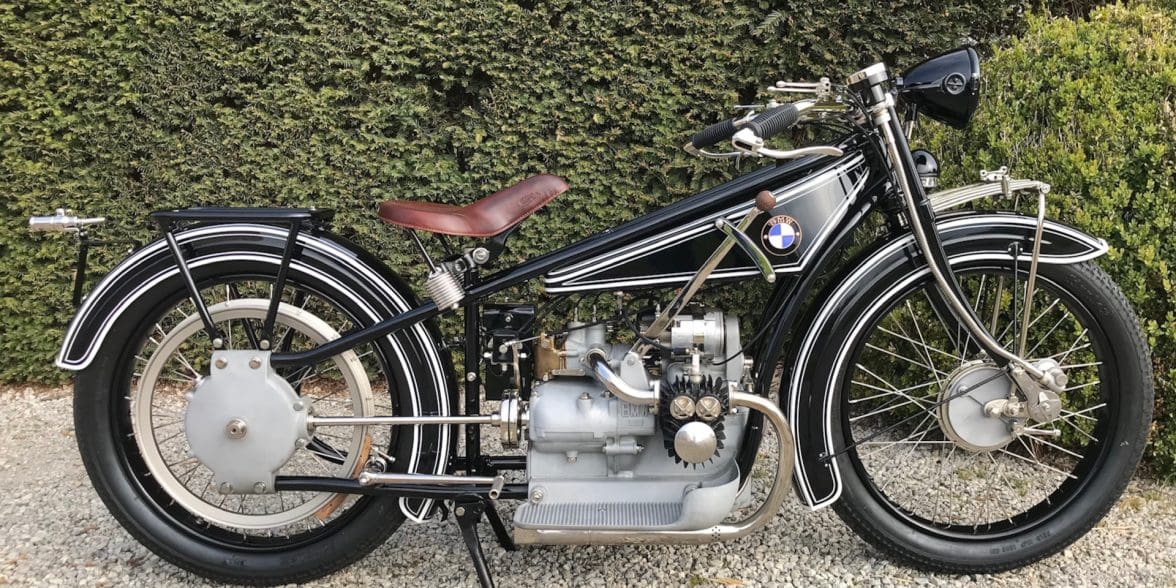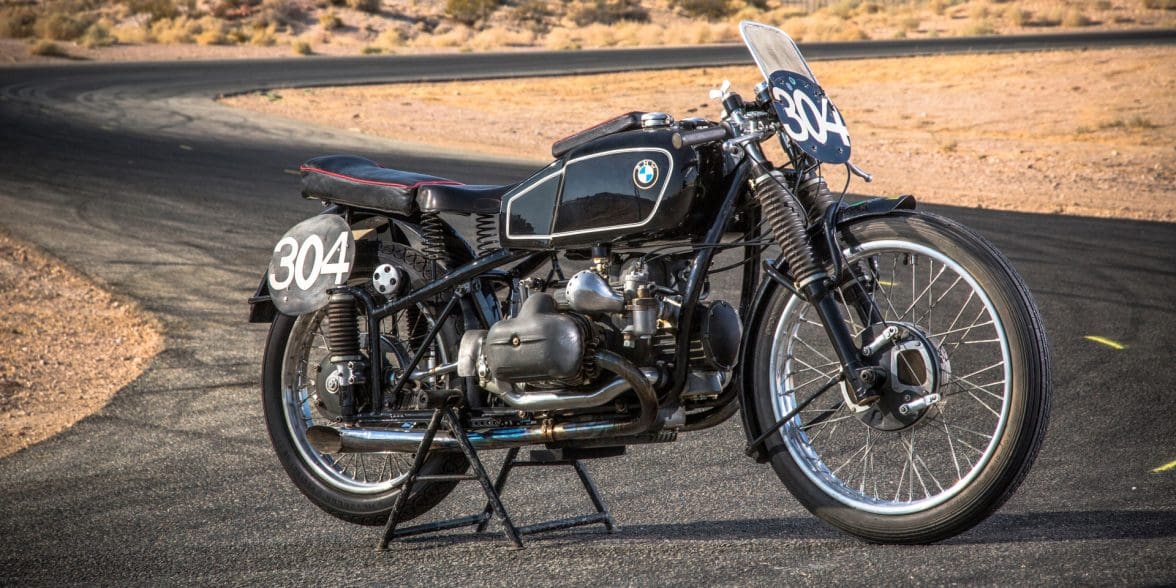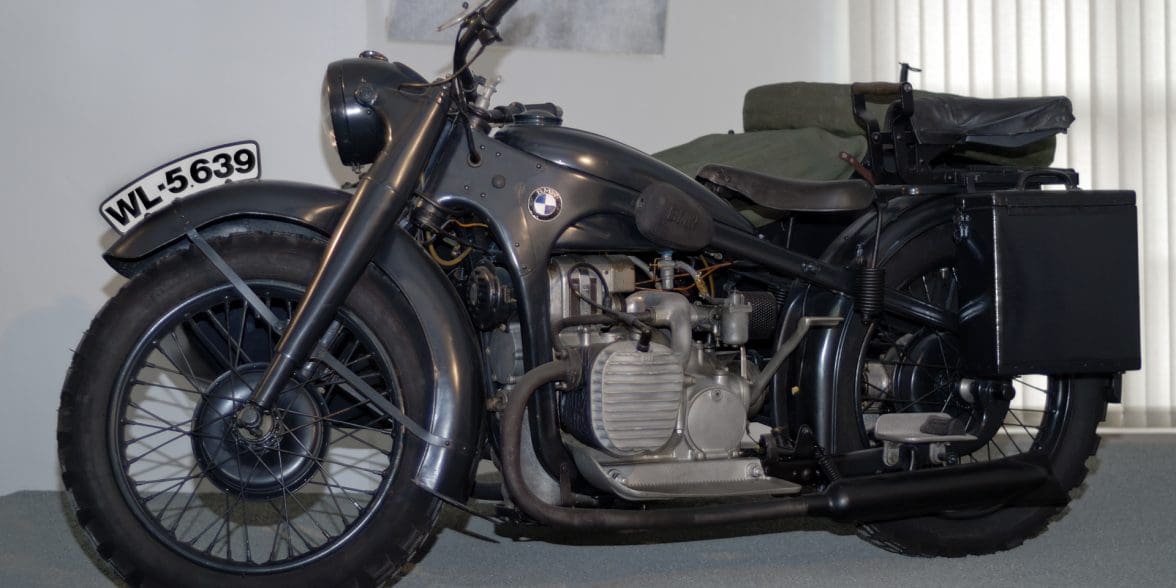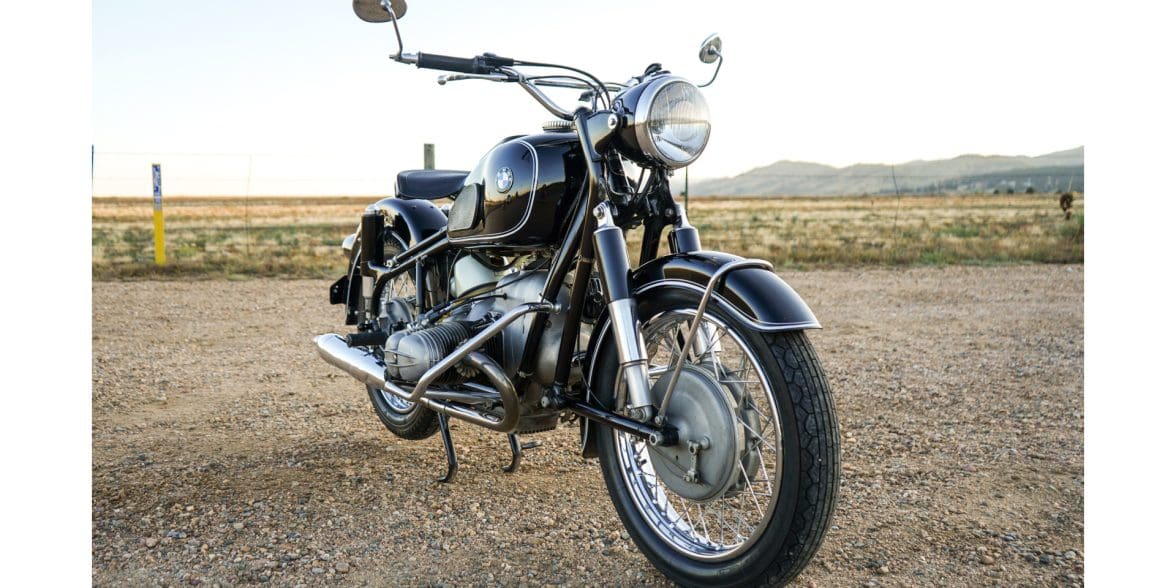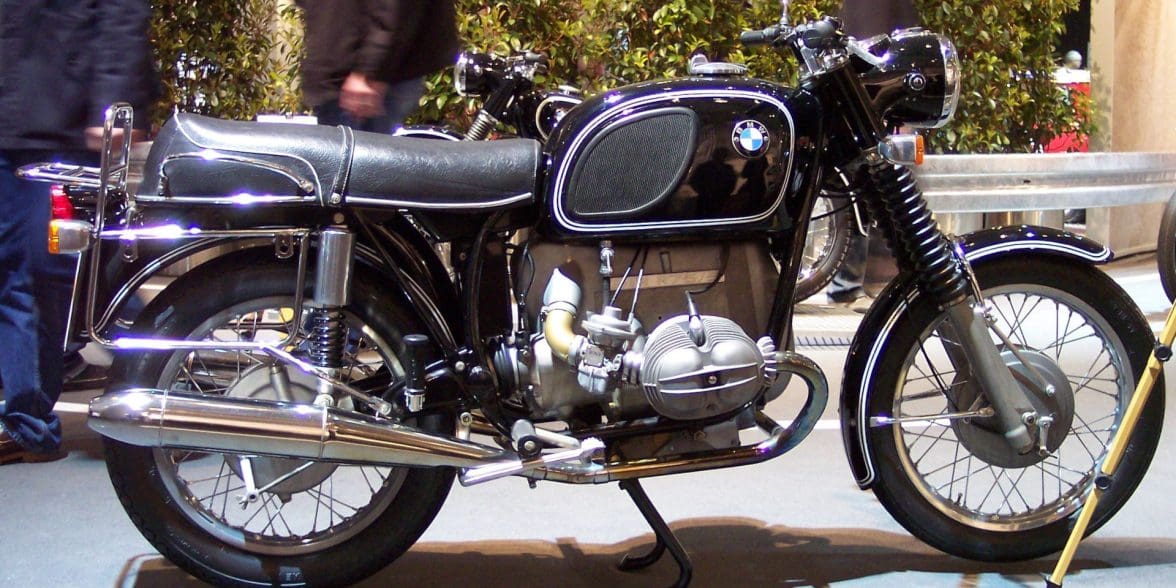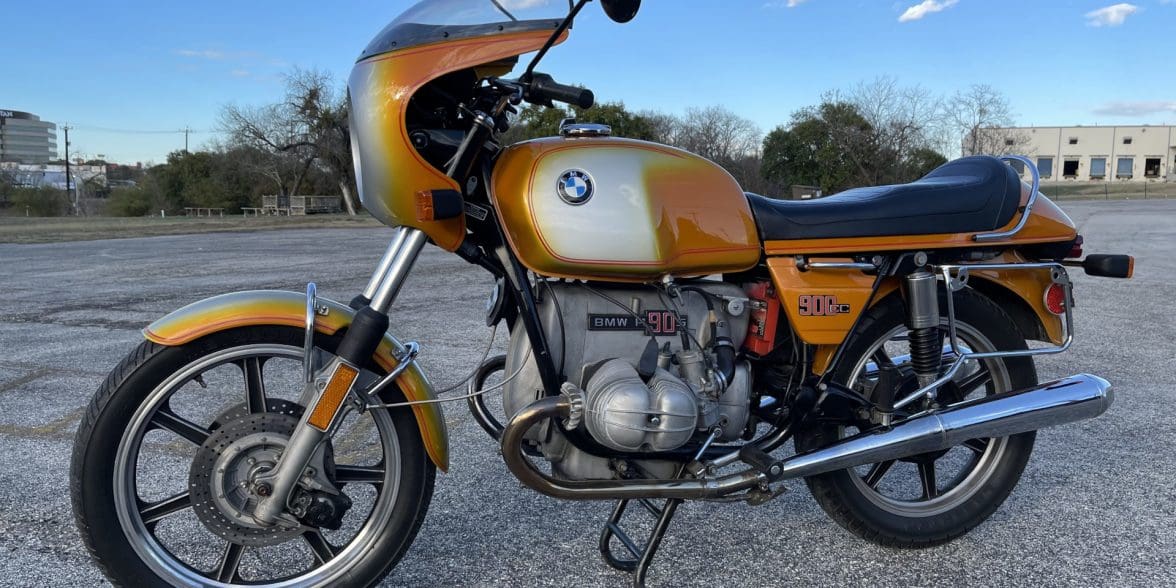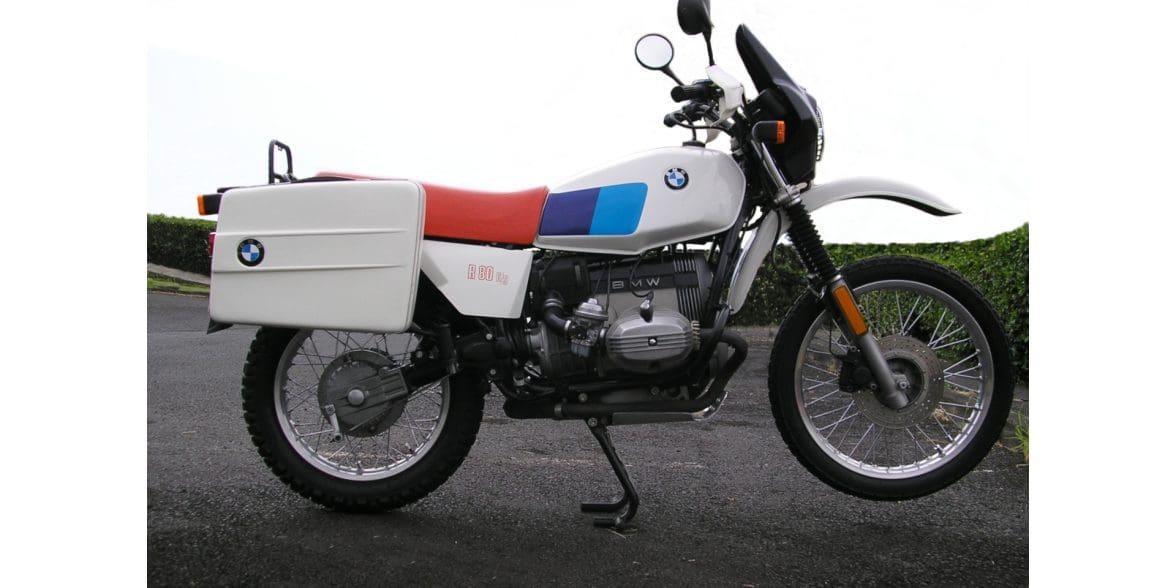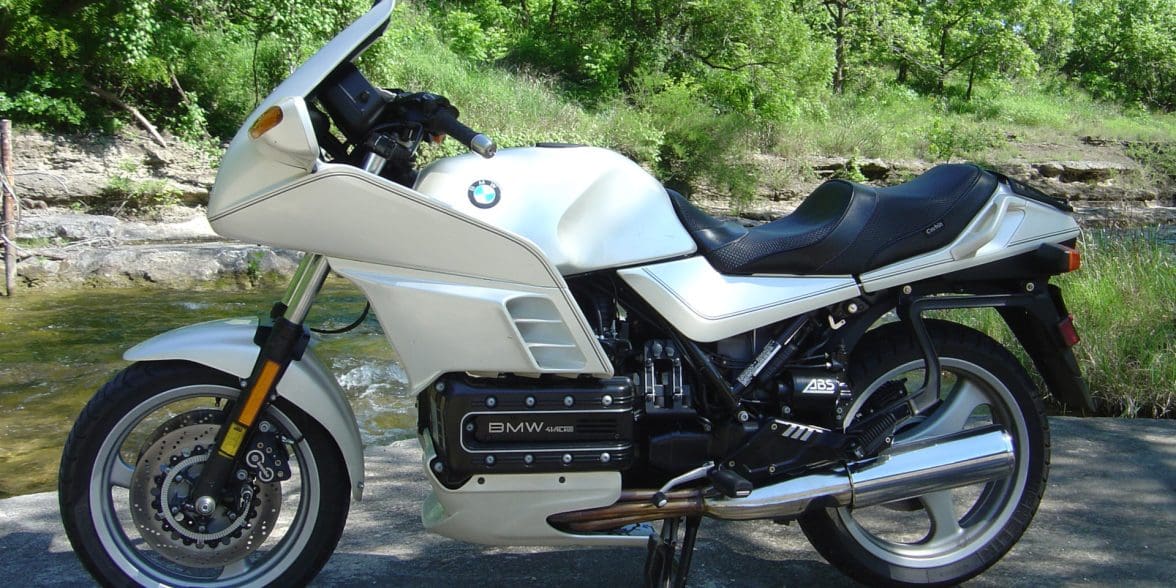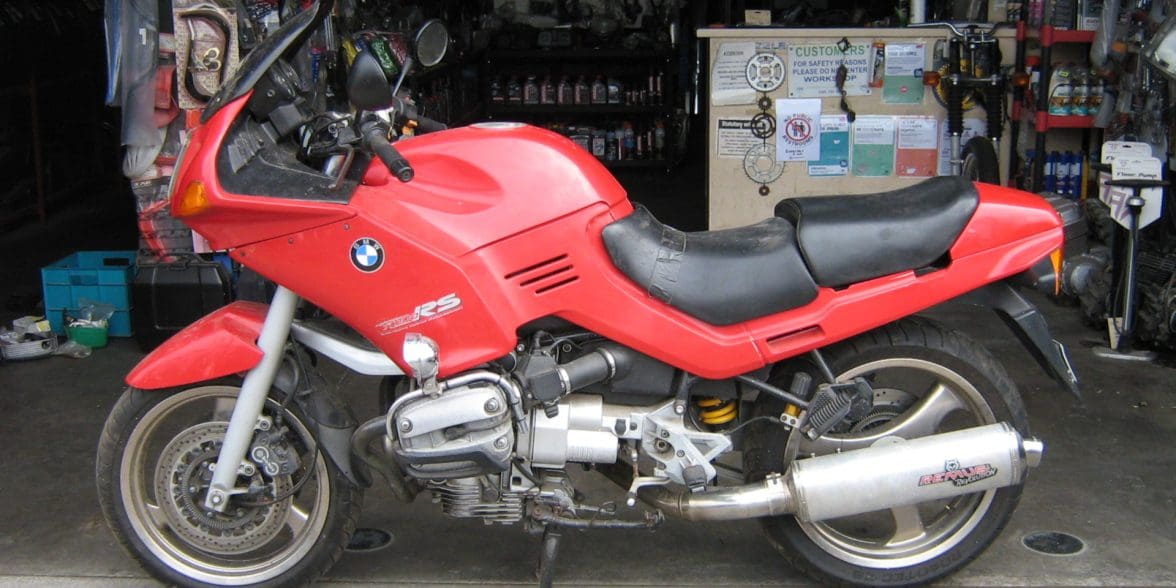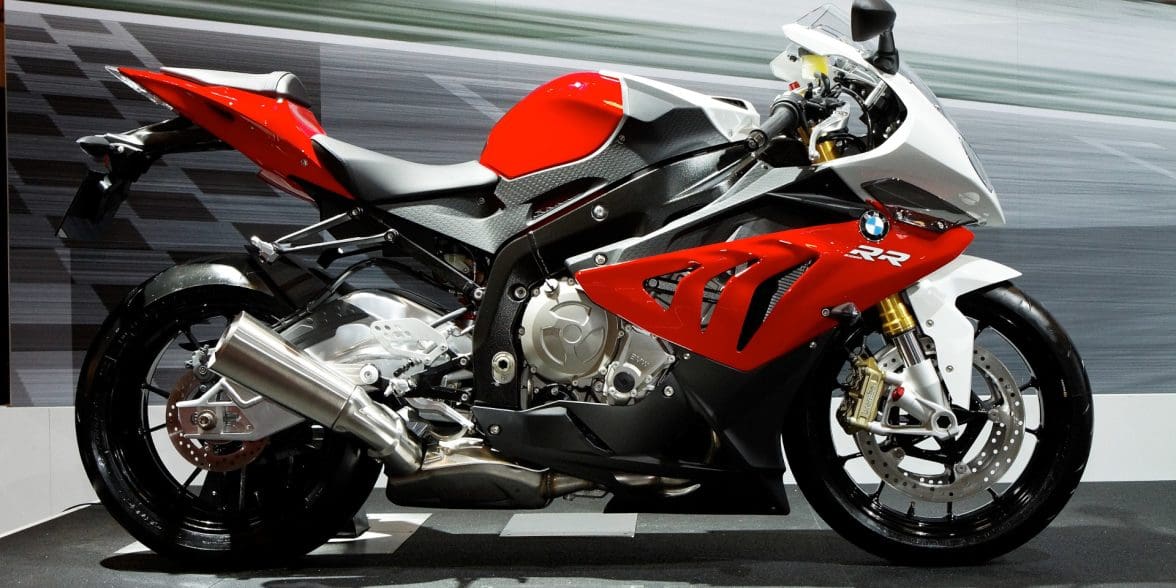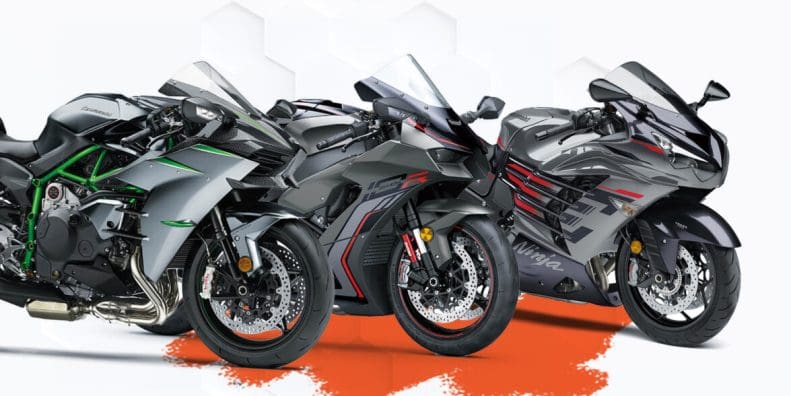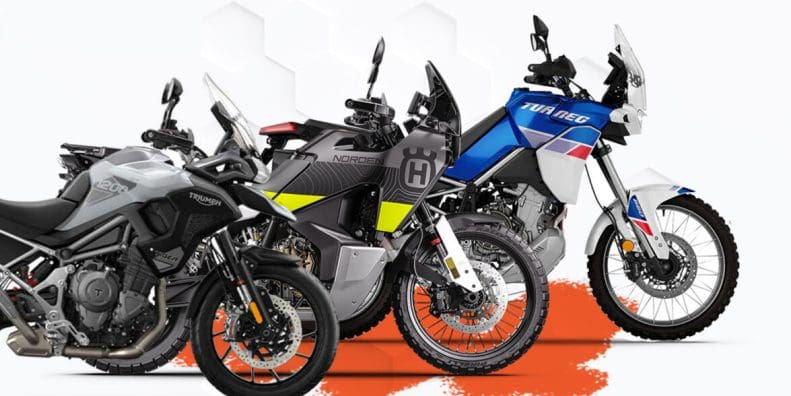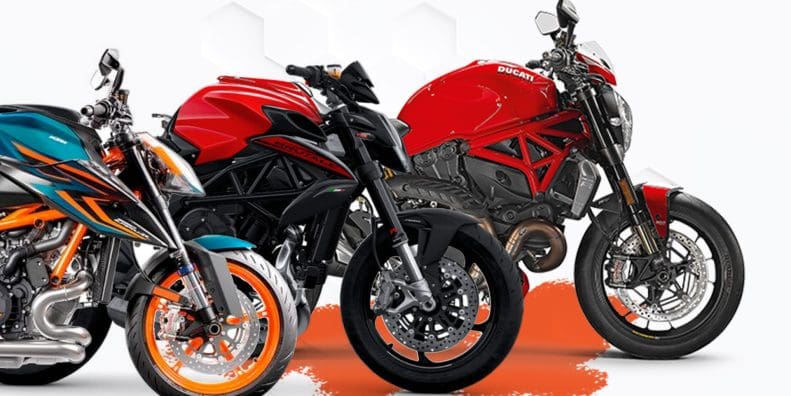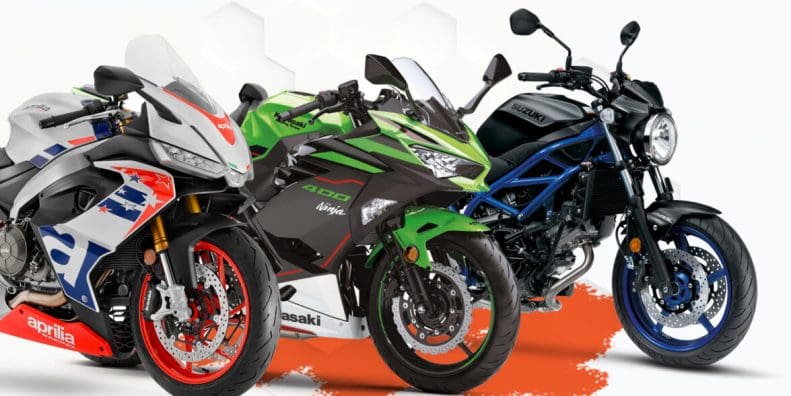The Best BMW Motorcycles Ever Made [2024 Edition]
Updated September 18, 2023 by Simon Bertram
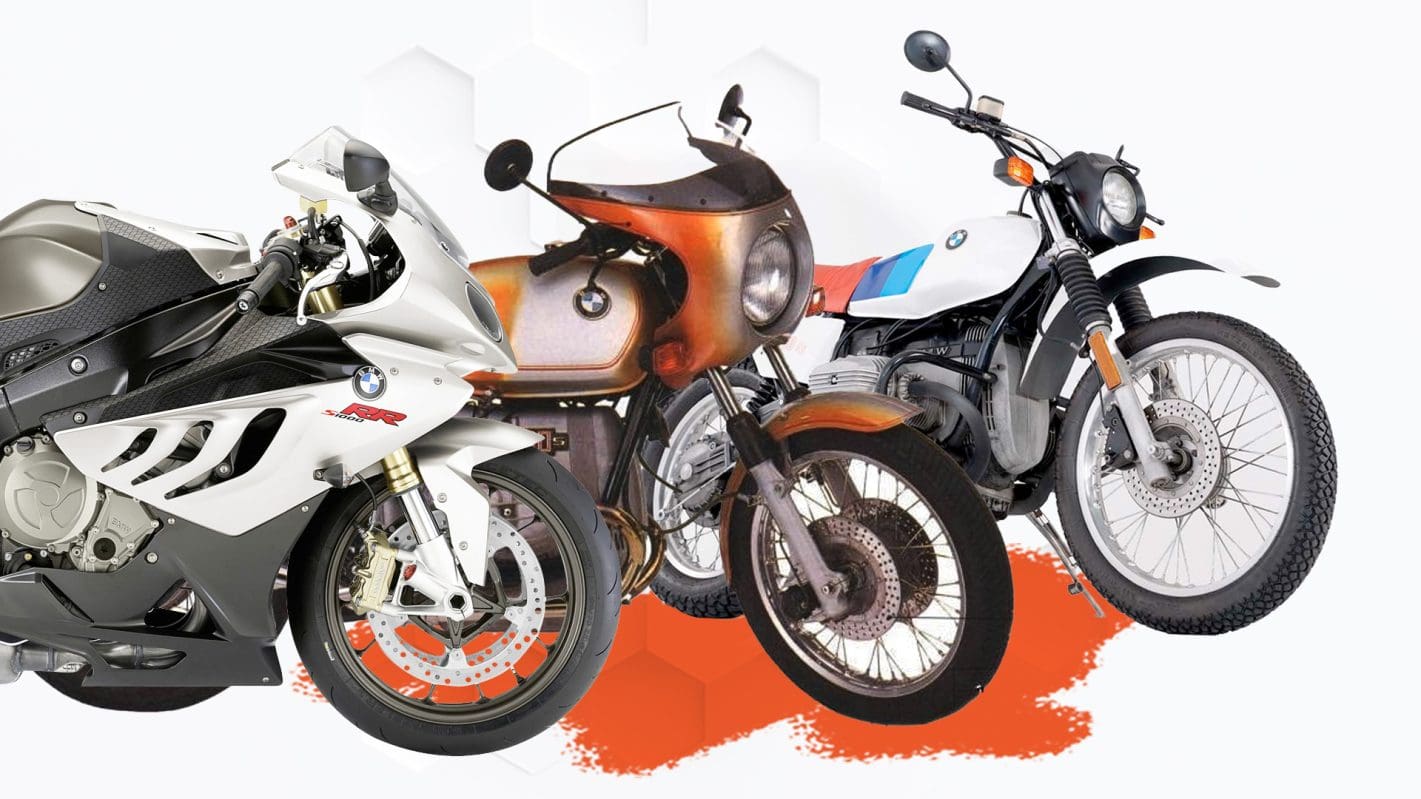
102 Years Of Motorrad
Article Quick Nav
These are some of the best and most important bikes made by BMW:
While today they are much better known for their luxury estate and performance cars, Bayerische Motoren Werke AG, better known as BMW, started out life as a manufacturer of airplane engines called Bayerische Flugzeuwerke. This history is reflected in the BMW rondel that is their logo, which represents a spinning propeller. They are a premier and storied European motorcycle brand.
In 1922, they started to produce motorcycles using engine technologies and designs that came from the aircraft side of the business, including the most famous of BMW engines, the boxer twin. With rapid advancement through the years of both road going and racing motorcycles, the German company was soon able to expand into automobiles, and the rest, as they say, is history.
Yet, it is surprising that today, not many people that aren't into motorcycles realize that BMW's Motorrad division is thriving, producing some of the most high tech, powerful, and capable motorcycles in the world. They are also quite famous for starting at least two entire classes of motorcycles, ADV and Sport Touring, so their importance in the history of two wheels cannot be understated. These then, in our subjective opinions, are the best and most important models to come out of the German's factory up until 2023
About Our Selections
These selections had one major criteria, that of being manufactured by, or over 80% produced by, BMW. Due to the importance of some bikes that were not technically street legal, both racing and road motorcycles are valid for consideration.
1923 BMW R32
The first motorcycle made by BMW, and what a strong start they had
Why We Picked It:
After the first World War, BMW had sanctions and restrictions placed on it that it could no longer produce aircraft or aircraft engines. To keep themselves going, they decided to take all that knowledge and innovation from the aircraft side and make a motorcycle.
That motorcycle was the R32. Using a 494cc boxer-twin, it produced 8.5 HP and, through a 3-speed hand-shift transmission, put that power to the rear wheel through an exposed shaft drive. It was capable of reaching an at the time ridiculously fast 60 MPH, and firmly established that BMW was a force to be reckoned with in the motorcycle landscape.
The legacy of the R32 is that it not only put BMW on the map, it also showed that they had some bloody smart engineers at the company. Just looking at it, at how all the complex bits just fit together and work, set the standard for all the other BMW bikes to follow, and despite a couple of misses in just over 100 years, BMW's been up to that standard year after year.
Specifications:
Price: Unknown
Engine: 494cc boxer twin
Power: 8.5 HP
Torque: Unknown
Transmission: 3 Speed Hand-Shift Manual
Curb Weight: ~270 lbs
Strengths:
Produced in 1922 as a 1923 model
The first BMW motorcycle
Set the standard for BMW's engineering excellence by being put together intelligently, with everything with a place and everything in its place while looking stylish and aesthetically pleasing
Learn More:
1926 BMW R57 Kompressor / Type 255 500 Kompressor
A racing bike that pushed the technologies of the 1920s to their limit
Why We Picked It:
Throughout the history of petrol-driven engines, racing has existed. At first the hobby of the wealthy, it evolved to become a major spectator sport, as well as an excellent marketing tool via the "Watch it on Sunday, drive it on Monday" relationship that many cars and bikes had with their racing models.
BMW was well aware of this when they made the R57 Kompressor, except for the fact that it had no equivalent road model. This was a racing bike through and through, and as such didn't need to be constrained by the (very relaxed by today's standards) rules of road legality. So what did they do?
They only went ahead and created telescoping, oil-damped front forks. Then decided that the boxer twin in the bike needed a bit more oomph and slapped a whacking great supercharger on it, bumping it from about 13 HP to a mighty 60 HP. It was also one of the first bikes to have a 4-speed transmission operated with the left foot, and helped innovate the now-common clip-on handlebars and racing tuck position.
It won quite a few races in its time, and was capable of a simply mind-boggling 140 MPH. In 1926! It was manufactured all the way up to the outbreak of World War 2, being renamed the Type 255 500 Kompressor in 1935, and while almost all of them are now owned by museums, there are still a few in private ownership that auction for over half a million dollars or more.
Specifications:
Price: Priceless
Engine: 492cc supercharged boxer-twin
Power: 60 HP
Torque: Unknown
Transmission: 4 Speed Manual
Curb Weight: ~305 lbs
Strengths:
Innovation in the form of both a front telescoping, oil-dampened fork suspension and four speed foot shift sequential transmission
An absolute monster in terms of power at 60 HP in the mid-1920s
Could hit 140 MPH (225 KPH)
Eventually won the 1939 Isle of Man TT in the premiere 500cc Senior class, the most prestigious of the TT trophy races.
Learn More:
1935 BMW R12
BMW at the forefront again with the first raod-legal motorcycle with a telescoping front fork
Why We Picked It:
By 1935, BMW had earned a name for itself for superior race motorcycles and superb road-going motorcycles in equal measure. They had innovated a lot of technologies for the race bikes that eventually made their way to the road bikes, and the R12 is the perfect example of that.
Having innovated it to keep race bikes stable and rideable at high speed, the front telescoping, oil-damped fork technology was introduced to the world of road bikes in 1935. Before this, almost everyone was using sprung cantilever suspension, under seat sprung suspension with a stiff front fork, or literally no suspension at all.
It also didn't hurt that the 1935 R12 is one of the best looking motorcycles of the 1930s. It was exactly what you would expect from BMW, elegance and sophistication in what could only be called a luxury motorcycle. What did hurt was that it was ridiculously expensive at the time at 1,630 RM, which at a value in 1935 of 2.45 RM to $1 USD made it $665 in 1935, as it was still recovering from World War I concession agreements. To give some perspective, you could buy a full on luxury car in 1935 for about $350 to $400, so despite it being just about $14,900 today, it was still a toy for the wealthy.
Specifications:
Price: 1,630 RM in 1935 ($14,900 in 2023)
Engine: 736cc boxer-twin
Power: 18 HP
Torque: Unknown
Transmission: 4 Speed Hand-Shift Manual
Curb Weight: ~380 lbs
Strengths:
The first production motorcycle with telescoping front fork suspension, oil-dampened
Every R12, and subsequent evolution model R17, came with sidecar attachment points built in to the frame
One of the best selling motorcycles in pre-WW2 Germany, with just over 36,000 units produced between 1935 and 1942, although almost all of the bikes between 1939 and 1942 were for the Nazi Party for use in the War. The picture above is of a 1940 military version with sidecar
Learn More:
1955 BMW R69
The bike that saved BMW Motorrad from shutting down
Why We Picked It:
Germany was in a very deep and dark place after World War II ended, with the economy in shambles, the currency severely devalued, and a lot of businesses unable to recover from the devastation. A lot of smaller motorcycle and automotive companies simply ceased to be in the decade after the war, and BMW was balancing on the very edge as well.
The 1955 R69 was designed specifically to not only continue on BMW's legacy of excellent motorcycles, but also to help the company recover and continue to exist. This was one of the first out-and-out sport bike models from BMW, who positioned it to attract those who wanted speed and luxury in equal measure (Sounds familiar to the automotive side, no?).
Using a 594cc boxer-twin, it produced 35 HP, had a four-speed transmission, and a shaft final drive. It could hit over 100 MPH, had a double loop steel frame for rigidity, but also had an Earles front fork and oil-pressure rear shock, making it comfortable without losing the sporting feel. It sold at 3,950 DM, or $988, in 1955, which was still expensive, but when Cycle World reviewed the evolution R69S model in 1962, they dubbed it the "Rolls-Royce of Motorcycles."
Specifications:
Price: 3,950 DM in 1955 ($11,320 in 2023)
Engine: 594cc boxer-twin
Power: 35 HP
Torque: Unknown
Transmission: 4 Speed Manual
Curb Weight: ~407 lbs
Strengths:
Had a base model and two evolutions: 1955 R69, 1960 R69S, and 1968 R69 US as an export model to North America
One of the first out-and-out, no-holds-barred sport models from BMW. Was still extremely comfortable and luxurious despite being able to go over 100 MPH
Expensive, but more attainable than previous models, which resulted in it selling quite well: 2,956 units of the R69 and 11,317 units of the R69S were made over the entire run from 1955 to 1969
Learn More:
1969 BMW R75/5
The bike that announced that BMW was back in a big way
Why We Picked It:
Technically, any of the /5 models from 1970 to 1973 could be put here, but it was the R75/5 that really stole the show. The R50/5 and R60/5 were its brothers, with a 500cc and 600cc engine respectively, but as the /5 series were meant to be both entry level bikes as well as oriented to the sport performance crowd, nothing less than 750cc would do for most.
In what would easily be classed as a sport naked today, the R75/5 was a very austere bike for the time. There were literally no fairings at all, and the tank was the only part that had any kind of surface paint that was there for aesthetics only. The 745cc boxer twin put out a decent 50 HP and 43 lbs-ft, and still used a shaft drive after 4 speed transmission. This propelled the bike to a top speed of 110 MPH.
The biggest thing about the R75/5 and its brothers is that they were the first production series from BMW to feature electric starters, as well as having adjustable, or "modular" in the parlance of the day, suspension front and rear. They sold for 4,996 DM, or $1,365, in 1969, which equates to $11,419 today. At that price, they were both affordable and attainable, and during the three years they were made, just over 38,000 units of just the R75/5 model had been made.
Of major significance in the history of BMW, which until then had been building motorcycles in Munich, was that the /5 series were the first bikes built entirely in their newly opened Berlin Motorrad factory, which is where all the bikes from BMW are made today.
Specifications:
Price: 4,996 DM in 1969 ($11,419 in 2023)
Engine: 745cc boxer-twin
Power: 50 HP
Torque: 43 lbs-ft
Transmission: 4 Speed Manual
Curb Weight: 463 lbs
Strengths:
After the success of the R69, BMW realized they needed an entry level model to attract more customers. The /5 series was the first purpose designed "entry level sport bike" in BMW's history
The first BMW model to be built entirely in their new Berlin Motorrad factory, where all the bikes made today come from
First BMW motorcycles to come with both a kick and electric starter
Had three versions: R50/5, R60/5, and R75/5, with 500, 600, and 750cc engines respectively
Total sales for just the R75/5 were 38,370, while the entire /5 model line sold 68,956
Learn More:
1973 BMW R90S
The first BMW designed by someone outside of the company, and also a brightly colored sledgehammer in the emerging sport bike market
Why We Picked It:
Up until the 1973 R90S, BMW bikes were, while stylish, known mostly for being monotone in their paint and design. Black paint with the blue and white rondel, and any accent lines were in white. This had led the media to label the Germans as "utilitarian," something they wanted to change. To do that, they commissioned designer Hans Muth to design a new flagship sport model for them.
The R90S was, in effect, BMW swinging a gigantic 900cc sledgehammer into the sport market and hitting it flush. Hans took the bubble fairing, sometimes called a bikini fairing, that many race bikes used and applied it to the R90S, making it the first production motorcycle to use it. He gave it a striking two-tone paint job, Daytona Orange, although other colors were available, without any black or white anywhere.
As a sport flagship, the R90S had an 898cc boxer twin that thundered out 67 HP and 56 lbs-ft of torque. That was translated to the rear wheel via BMW's first 5 speed sequential transmission, although the shaft drive still remained. With the aerodynamic fairing and power, the R90S was able to hit 124 MPH, but more importantly was the first production road bike from BMW to accelerate to 60 MPH in under 5 seconds. It was incredibly fast, stylish, and tossed the "utilitarian" title out the nearest window with some enthusiasm. It was the first sport bike from BMW as well that had a disc brake up front, although it still used a drum brake in the rear.
It was made for 3 years, sold at 9,130 DM or $2,849, and in that time moved 17,455 units.
Specifications:
Price: 9,130 DM in 1973 ($19,700 in 2023)
Engine: 898cc boxer-twin
Power: 67 HP
Torque: 56 lbs-ft
Transmission: 5 Speed Manual
Curb Weight: 474 lbs
Strengths:
The first bike in BMW history to be designed by someone not within BMW
First production road bike to have a bubble fairing
First BMW motorcycle to be able to hit 60 MPH in under 5 seconds, and would do the quarter mile in 13.5 seconds. It was a seriously fast motorcycle for the early 70s
First BMW to not come in black and white paint, although there was a black paint with gold pinstripes option available
First BMW sport bike to have a front disc brake
Broke the mold in terms of BMW design, which opened them up to experimenting with more radical ideas in the future, much to our benefit
Learn More:
1980 BMW R80 G/S
A motorcycle so beyond anything before seen, it created the ADV class of motorcycles
Why We Picked It:
In official literature, the 1980 R80 G/S is labelled as a "Doppelsport" motorcycle, or what we know as a dual-sport. It was an idea that BMW had been bouncing around for some time, that of a Gelände/Straße (Offroad/Onroad) capable motorcycle. However, unlike other dual-sports of the time, they added three key components that made it one of the most important BMW motorcycles of all time.
The first is that it had a decently tall windshield, something to deflect the air up and over the rider instead of them bearing the brunt of it on their body, making it excellent for road travel. The next, it was fitted with longer travel suspension than any BMW road bike, but shorter than most dedicated off-road bikes, meaning it was capable of handling both road and dirt. Lastly, it came with pannier locker/saddlebag mounts built into the frame, and had a flat "shelf tail" to mount a top box on as well, tied to the raised bar at the rear of the seat.
This made it possible for riders to not only ride to the off-road area they were headed to, but also be able to bring along shelter, food, spare parts, toolkits, and the like... everything an adventure rider needs to spend a couple of days off-road. It also came as standard with a center stand and a single-sided swingarm, making repairs to the wheels and tires much easier in the middle of nowhere.
It was so popular, and so innovative, that it escaped the label of dual-sport and created an all new one: "Adventure Motorcycle," or as we shorten it to today, ADV.
Specifications:
Price: 8,290 DM in 1980 ($18,030 in 2023)
Engine: 797/5cc boxer-twin
Power: 50 HP
Torque: 41 lbs-ft
Transmission: 5 Speed Manual
Curb Weight: 410 lbs
Strengths:
The world's first adventure bike, or ADV
Created the formula for an adventure bike: Windshield, on-and-off road capable suspension, attachment points for panniers, and able to be repaired in the field with a few curse words, a hammer, and a bit of wire
Was so successful, and created such a class of motorcycle, that as of June 21, 2023, over 1 million BMW G/S models of all types have been produced.
Was revolutionary in motorsports as well, as an R80 G/S modified for racing won the Paris-Dakar Rally in 1981 in the Rally's third year. R80 G/S's prepped for racing also won the Rally in 1983, 1984, and with a 1,000cc variant in 1985. All Dakar race bikes from every manufacturer since have been ADV-style, and quite often have a consumer version available as well
Learn More:
1983 BMW K100RS
Nicknamed "The Flying Brick," it nonetheless helped to kickstart the sport touring class of motorcycles, and was an engineering tour-de-force
Why We Picked It:
Between 1983 and 1986, many manufacturers started to combine sport bikes and touring bikes into an all new class of bike, the Sport Tourer.
Much of the initiative to create such a crossover class can be attributed to BMW, as demand for a road-going-only version of the R80 G/S was growing. BMW decided to give their customers what they wanted, but being German, they over-engineered the hell out of it, much to our benefit.
For the first time in 6 decades, BMW made a new engine for their motorcycles. Using technical knowledge gained from the automotive side of the business, the K100RS came with a 987cc inline four. What makes this engine different than most is that it was mounted longitudinally, and rotated 90 degrees onto its right side. This put the valve cover sticking out of the right side of the frame, with the crankshaft, transmission and shaft drive on the left side of the frame.
It was also extremely advanced, using Bosch LE-Jetronic fuel injection which had just been introduced into the all-new 3 Series of cars, as well as used a breaker-less ignition circuit to ensure proper spark at all times in each cylinder. This high tech engine produced an excellent 89 HP and 63.3 lbs-ft of torque, and was placed in a sport bike frame as a stressed member.
The result was a motorcycle that could cruise at 100 MPH, top out at nearly 140 MPH, and absolutely sipped fuel, giving it massive range. Despite being a sport frame, the bike was set up in the standard riding style, with high handlebars, comfortable saddle, and mid-mount pegs. To say that it was successful is an understatement, as there has always been an RS model in BMW's lineup ever since.
Specifications:
Price: $6,399 in 1983 ($19,726 in 2023)
Engine: 987cc inline four
Power: 89 HP
Torque: 63.3 lbs-ft
Transmission: 5 Speed Manual
Curb Weight: 536 lbs
Strengths:
One of the few motorcycles to fit an inline four longitudinally, and the only one to do so with the engine on its side.
Got the name "The Flying Brick" from both its boxy styling as well as the fact that the engine looked like brick with its valve cover. The flying part came from the fact that it was immensely fast for the type of motorcycle it was.
Had an inline three brother in the K75 with a displacement of 740cc, but the same bore and stroke as the inline four
Later models, like the one in the picture above, came with an early form of motorcycle ABS
Proved to be very popular with the EU sport touring crowd, as well as made some inroads into the Japanese dominated sport bike market in the USA. From 1983 to 1989, 34,804 units were produced
Learn More:
1994 BMW R1100 RS
The start of nearly 30 years of BMW's road touring class of motorcycles
Why We Picked It:
When the R1100 RS was released in 1993 as a 1994 model, no one knew that it would be one of the defining moments in BMW's entire history. What was started with the K100RS, then faltered slightly with the 1990 K1, was perfected in the new bike.
It was innovative in that it was the first bike to BMW's all new "oilhead" boxer twin, at 1,085cc of displacement. It was primarily air cooled with the cylinders out in the airstream with cooling vanes, but the heads were supplemented with oil cooling. This allowed for the engine to run much more efficiently, and had the side effect of boosting performance, in fact adding a full 50% extra power over the previous 1000cc air-cooled boxer twin from the K1. This gave it a total of 90 HP and about 70 lbs-ft of torque, with a top speed of 131 MPH.
BMW's stated goal with the R1100 RS was to make the perfect sport tourer, balancing power, handling, and comfort in one bike. We can safely say that it succeeded, as that same engine, albeit with a bigger bore and some significant upgrades, is the one that still sits at the heart of a R1250 RS in 2023
Specifications:
Price: $11,049 in 1994 ($22,890 in 2023)
Engine: 1,085cc boxer-twin
Power: 90 HP
Torque: 70 lbs-ft
Transmission: 5 Speed Manual
Curb Weight: 564 lbs
Strengths:
One of the most successful sport tourer model lines of all time started with this motorcycle.
Was Cycle World's "Best Standard Motorcycle" of 1994
The engine proved to be so good that it was adapted in 1994 for the 1995 BMW R1100 G/S, and a more powerful version of the engine was released with the 1999 R1100S
The oilhead engine, adapted to have liquid cooled heads in 2013, is still in use today in some R series motorcycles, such as the R nineT and the R1250 RS
Learn More:
2009 BMW S1000 RR
BMW's first superbike, designed to race in World SBK while also being a monster for the road
Why We Picked It:
It's no secret that for a while, BMW quietly disappeared from the global racing scene, mostly through the late 90s and most of the 2000s. However, in 2009, BMW stunned the world by not only dropping the S1000 RR for racing in the 2009 FIM World Superbike Championship, but also releasing 1,000 units for sale to satisfy WSBK homologation requirements. In 2010, after the model proved extremely popular, the superbike was upgraded to full commercial production.
When it was introduced, it was considered the best equipped and most technologically advanced superbike the world had seen. It came with an all new 999cc inline four with a 6 speed transmission and for the first time in a long time, a chain final drive. It tipped the scales at barely 450 lbs, which was insanely light for the 190 HP and 82.5 lbs-ft the road bike came with.
It earned its place as a superbike right out of the gate, with 60 dispatched in a hair over 3 seconds, the quarter mile gone in dead on 10 seconds, and a top speed of 188 MPH. The racing version of the bike has become the favorite of many road racers, including the fastest man to ever lap the Isle of Man TT, Peter Hickman, at an average speed of 135.452 MPH on the final lap of the 2018 SuperStock event. Hickman also won the 2015 and 2016 Macau Grand Prix, one of the hardest city road course races in the world, back to back astride an S1000RR race bike.
Specifications:
Price: $17,895 in 2023
Engine: 999cc inline four
Power: 190 HP in 2009 (205 in 2023)
Torque: 82.6 lbs-ft
Transmission: 6 Speed Manual
Curb Weight: 386 lbs
Strengths:
Initially developed to be a World SBK racing bike with 1,000 road going homologation models, it proved so popular and there was so much demand that it entered full commercial production in 2010
Has evolved three times over the years, implementing new technologies and increasing the power from 190 to 199 and finally to 205 HP
Has an M-Division version, the M1000 RR, that has a different seat, carbon fiber everywhere, racing winglets, super-lightweight wheels, optimized and upgraded braking system, and the like
The racing version holds the outright speed record at the Isle of Man TT in the 1,000cc or less SuperStock class, ridden by Peter Hickman
Learn More:
Other Best Motorcycle Lists


